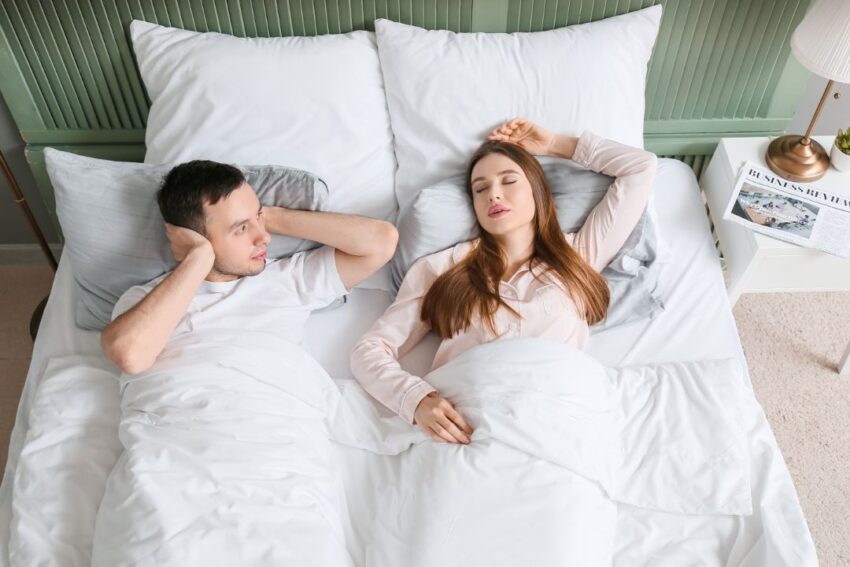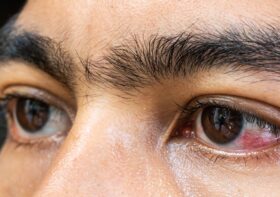The Role of Sleep Apnea Machines in Managing Sleep Disorders

Sleep disorders can have a significant impact on overall health and well-being. One of the most common sleep disorders is sleep apnea, which affects millions of people worldwide. Fortunately, advancements in medical technology have led to the development of sleep apnea machines that can help manage this condition effectively.
Understanding Sleep Disorders
Sleep disorders are conditions that disrupt an individual’s normal sleep patterns and can lead to various health problems. These disorders can encompass a range of symptoms, including difficulty falling asleep, staying asleep, or experiencing poor sleep quality. People with sleep disorders often feel tired and fatigued during the day, which can affect their overall productivity and quality of life.
It is important to note that sleep disorders can affect individuals of all ages, from infants to the elderly. While some sleep disorders may be temporary and resolve on their own, others may require medical intervention and ongoing management.
What is Sleep Apnea?
Sleep apnea is a common sleep disorder characterized by pauses in breathing or shallow breaths during sleep. These pauses, known as apneas, can last for several seconds and occur multiple times throughout the night. Sleep apnea can be categorized into three types: obstructive sleep apnea, central sleep apnea, and complex sleep apnea syndrome. Obstructive sleep apnea is the most prevalent type, and it occurs when the airway becomes partially or completely blocked during sleep.
Obstructive sleep apnea is often associated with risk factors such as obesity, smoking, alcohol use, and certain medical conditions. The repetitive pauses in breathing can lead to fragmented sleep and a decrease in oxygen levels, which can have detrimental effects on overall health.
Common Symptoms of Sleep Disorders
Several symptoms are associated with sleep disorders, including snoring, excessive daytime sleepiness, morning headaches, difficulty concentrating, and irritability. In the case of sleep apnea, loud or chronic snoring is a common symptom, along with abrupt awakenings accompanied by a choking or gasping sensation. Read more about 8 Common Issues to Avoid with your CPAP Masks by clicking here.

It is important to note that not all individuals with sleep disorders will experience the same symptoms. Some may only have mild symptoms, while others may have more severe manifestations. Additionally, certain sleep disorders may present with unique symptoms that are specific to that particular condition.
The Impact of Sleep Disorders on Health
Sleep disorders can have a profound impact on an individual’s physical and mental health. Lack of quality sleep can lead to an increased risk of developing chronic conditions such as obesity, diabetes, heart disease, and hypertension. Additionally, sleep disorders can negatively affect cognitive function, memory, mood stability, and overall emotional well-being.
Research has shown that individuals with untreated sleep disorders are more prone to accidents and injuries due to impaired alertness and concentration. Furthermore, the chronic sleep deprivation associated with sleep disorders can contribute to a weakened immune system, making individuals more susceptible to infections and illnesses.
It is crucial for individuals experiencing symptoms of sleep disorders to seek medical evaluation and appropriate treatment. With proper diagnosis and management, individuals can improve their sleep quality, enhance their overall health, and regain a better quality of life.
Introduction to Sleep Apnea Machines
Sleep apnea machines, also known as continuous positive airway pressure (CPAP) machines, are widely used to manage sleep apnea effectively. These devices work by delivering a constant flow of pressurized air to the airway, preventing it from collapsing and allowing the individual to breathe freely during sleep.
How Does a Sleep Apnea Machine Work?
A sleep apnea machine consists of three main components: a mask, a tube, and a motorized fan. The mask is worn over the nose and/or mouth and is securely fastened to ensure an airtight seal. The tube connects the mask to the motorized fan, which generates pressurized air. This pressurized air keeps the airway open, preventing apneas and snoring.
Different Types of Sleep Apnea Machines
There are various types of sleep apnea machines available, depending on individual needs and preferences. Common types include CPAP machines, bilevel positive airway pressure (BiPAP) machines, and automatic positive airway pressure (APAP) machines. CPAP machines deliver a constant pressure throughout the night, while BiPAP machines provide different pressures during inhalation and exhalation. APAP machines automatically adjust the pressure based on the individual’s breathing patterns.
The Benefits of Using Sleep Apnea Machines
Using sleep apnea machines can bring about numerous benefits for individuals with sleep apnea and other related sleep disorders. Let’s explore some of these benefits in detail.
Improvement in Sleep Quality
One of the primary benefits of using sleep apnea machines is the improvement in sleep quality. By preventing episodes of apnea and maintaining an open airway, these machines ensure uninterrupted breathing throughout the night. As a result, individuals using sleep apnea machines often experience more restful and rejuvenating sleep, leading to increased energy levels and improved overall well-being.
Imagine waking up in the morning feeling refreshed and ready to take on the day. With a sleep apnea machine, this becomes a reality. The consistent flow of pressurized air keeps the airway open, allowing for a continuous and uninterrupted supply of oxygen. This not only prevents apnea episodes but also ensures that the body receives the necessary oxygen levels for optimal functioning.
Furthermore, improved sleep quality has a positive impact on cognitive function. When the brain gets the rest it needs, memory, concentration, and problem-solving abilities are enhanced. Individuals using sleep apnea machines often report improved mental clarity and alertness during the day.
Reduction in Snoring and Other Sleep Apnea Symptoms
Another significant benefit of sleep apnea machines is the reduction in snoring and other sleep apnea symptoms. Snoring is a common and often bothersome symptom of sleep apnea, which can disturb not only the affected individual but also their sleep partner. By maintaining a constant flow of pressurized air, sleep apnea machines help eliminate snoring and ensure a quieter and more peaceful night’s sleep for everyone involved.
Snoring can be a source of embarrassment and can strain relationships. Sleep apnea machines offer a solution by providing a steady stream of air pressure that keeps the airway open and eliminates the vibrations that cause snoring. This not only benefits the individual using the machine but also their sleep partner, who can finally enjoy a restful night’s sleep without the disruptive noise of snoring.
In addition to reducing snoring, sleep apnea machines also alleviate other sleep apnea symptoms. These may include frequent awakenings during the night, morning headaches, and excessive daytime sleepiness. By addressing these symptoms, sleep apnea machines promote a more restorative sleep and improve overall sleep quality.
Long-Term Health Benefits
Regular use of sleep apnea machines can also contribute to long-term health benefits. By effectively managing sleep apnea, these devices can help reduce the risk of developing various chronic conditions associated with the disorder. Improved sleep quality and uninterrupted breathing can lead to better cardiovascular health, blood pressure management, and glucose control. Additionally, using sleep apnea machines may alleviate symptoms of depression, anxiety, and cognitive impairment.
Untreated sleep apnea can have serious implications for overall health. It has been linked to an increased risk of heart disease, stroke, and diabetes. By using sleep apnea machines, individuals can significantly reduce these risks and improve their long-term health outcomes. The consistent and uninterrupted flow of air provided by these machines ensures that the body receives the necessary oxygen levels, promoting cardiovascular health and reducing the strain on the heart.
Furthermore, sleep apnea has been associated with mood disorders such as depression and anxiety. By effectively managing sleep apnea with the use of machines, individuals may experience a reduction in these symptoms. Improved sleep quality and better oxygenation of the brain can have a positive impact on mental health, leading to a greater sense of well-being and improved quality of life.
In conclusion, sleep apnea machines offer a multitude of benefits for individuals with sleep apnea and related sleep disorders. From improving sleep quality and reducing snoring to promoting long-term health and well-being, these devices play a crucial role in managing sleep apnea and enhancing overall quality of life.
Potential Challenges and Solutions with Sleep Apnea Machines
While sleep apnea machines offer significant benefits, it is essential to address potential challenges that individuals may encounter when using them. By being aware of these challenges and implementing practical solutions, individuals can maximize the effectiveness and comfort of their sleep apnea machines.
Common Concerns about Using Sleep Apnea Machines
Some individuals may have concerns or reservations about using sleep apnea machines. These concerns may range from discomfort or claustrophobia associated with wearing a mask to noise-related issues. It is crucial for individuals to understand that modern sleep apnea machines are designed with user comfort in mind, and there are various mask styles available to suit individual preferences. Noise issues can be minimized by selecting a quieter model or placing the machine further away from the bed.
Tips for Adjusting to a Sleep Apnea Machine
Adapting to using a sleep apnea machine may require some time and adjustments. Here are a few tips to help individuals navigate this transition:
- Start gradually: Begin by wearing the mask and using the machine for short periods during the day to become accustomed to the sensation.
- Seek support: Joining support groups or seeking guidance from healthcare professionals who specialize in sleep disorders can provide valuable tips and encouragement.
- Sleeping position: Experiment with different sleeping positions to find the most comfortable one that allows for proper mask fit and airway alignment.
- Maintain cleanliness: Regularly clean and maintain the sleep apnea machine, including the mask, tubing, and filter, to ensure optimal performance and hygiene.
- Persistent issues: If discomfort or other obstacles persist, discuss them with a healthcare professional who can provide personalized recommendations or adjustments to enhance user experience.
Case Studies: Success Stories of Sleep Apnea Machine Users
In recent years, numerous individuals have experienced substantial improvements in their quality of life through the use of sleep apnea machines. These success stories offer hope and inspiration to others dealing with sleep apnea and related sleep disorders.
One such success story is that of John, a middle-aged individual who had been suffering from severe sleep apnea for several years. John’s apneas were causing him to wake up multiple times during the night, leaving him constantly exhausted and unable to concentrate during the day. After being prescribed a sleep apnea machine by his doctor, John noticed a significant improvement in his sleep quality. He no longer woke up gasping for air, and his snoring subsided. John’s energy levels increased, and he regained his mental clarity and focus. You can also read about Thunderstorm asthma by visiting https://www.health.nsw.gov.au/environment/factsheets/Pages/thunderstorm-asthma.aspx
Similarly, Sarah, a young woman in her twenties, discovered that she had been living with undiagnosed sleep apnea for years. After undergoing a sleep study, she was started on a sleep apnea machine. The transformation in Sarah’s life was remarkable. She no longer felt fatigued throughout the day and noticed a reduction in her morning headaches. Sarah also mentioned that her relationships and overall mood improved as she felt more refreshed and energized.
In conclusion, sleep apnea machines play a crucial role in managing sleep disorders such as sleep apnea. These devices offer numerous benefits, including improved sleep quality, reduction in snoring, and long-term health benefits. While there may be challenges associated with using sleep apnea machines, practical solutions exist to address them. The success stories of individuals who have incorporated sleep apnea machines into their lives provide hope and encouragement for others in a similar situation. If you suspect you may be suffering from a sleep disorder, consult with a healthcare professional who can guide you towards effective management strategies, including the use of sleep apnea machines.



